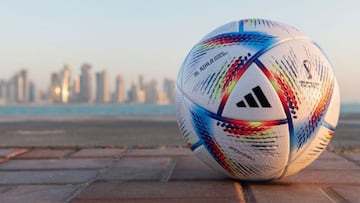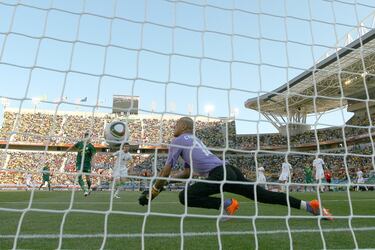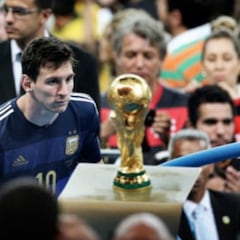Al Rihla, the official ball of the Qatar 2022 World Cup: characteristics and origin of the name
Everything you need to know about the official ball of the tournament

On Wednesday 30 March 2022, football’s governing body FIFA released a statement coupled with a photo of a football. The ball sat in the foreground and behind it, the tall, indiscriminate buildings of a Qatari city. A body of crisp, blue water separated the two. On the ball, amidst an array of striking lines sprawling away like a fireworks display of primary colours and the newly simplified Adidas logo, were the words: Al Rihla, Official Match Ball FIFA World Cup Qatar 2022.
FIFA and Adidas have had a long-standing relationship when it comes to making the ball for football’s biggest tournament. In fact, according to the statement, the Al Rihla is the 14th consecutive match ball Adidas have created for the World Cup, the first time being back in 1970.
“Al Rihla means “the journey” in Arabic”, says FIFA in its statement, “and is inspired by the culture, architecture, iconic boats and flag of Qatar.
In terms of the aesthetics, Adidas say that “the lines across the surface are inspired by the futuristic stadiums across the five cities. The bold, vibrant colours set on a pearlescent background represent the FIFA World Cup host country and the ever-increasing speed of the game.”

World Cup footballs of the past have been... interesting
As regards to the technology both inside and outside the ball, The Athletic conducted a test with a professional goalkeeper and concluded that the Al Rihla “feels like it has a sticky coating” but “there are moments when [the ball] catches you by surprise and throws off your timing just enough that you drop or punch a ball you were expecting to catch.” Might we be in for some surprises in the early rounds?
The German brand claim that “the new design that allows the ball to maintain its speed significantly higher” and that “a textured polyurethane skin in a new 20-piece panel shape that enhances aerodynamics to improve the accuracy, flight stability and swerve of shots”.
Related stories
Anyone remember 2010? Does the word Jabulani ring any bells? That edition of Adidas’ attempt at a World Cup ball received furious criticism from goalkeepers everywhere: Claudio Bravo called it a “beach ball”; David James said it was “Dreadful”; Julio Cesar said that it was “like a ball you would buy in the supermarket”. The Athletic said the Al Rihla “has the potential to do some wicked and unpredictable things in the air... but is not as extreme as the Jabulani.”
Although things are initially looking positive, we will have to wait and see if the Al Rihla has the same misfortune as the Jabulani.

